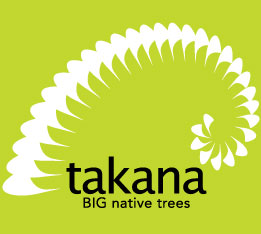As part of the “Ecosourcing” Workshop, conference participants were asked to consider and discuss the following:
- Are current ecosourcing policies and practice – A) Scientifically valid? B) Practical and affordable?
- How important is ecosourcing compared with other aspects of revegetation?
- What aspects of revegetation are more important than ecosourcing?
- What new rules/guidelines could be developed to improve ecological outcomes without incurring great cost or confusion?
- How do we accommodate the desire for selective breeding for productive purposes while adhering in a policy of protection of natural genetic in our indigenous plant populations?
(Answers to Questions 1 – 3 were grouped under three headings and can be summarized as follows:)
1a: Are current ecosourcing policies and practice scientifically valid?
- Yes | 7, No | 44, Don’t Know | 36
1b: Are current ecosourcing policies practical and affordable?
- Yes | 20, No | 41, Don’t Know | 21
2: How important is ecosourcing compared with other aspects of revegetation?
- Most Important | 27, (Intermediate) | 13, Not so important | 33, (Intermediate) | 6, Irrelevant | 10
(Answers to Questions 3 – 5 took the form of ideas and comments:)
3: What aspects of revegetation are more important than ecosourcing?
- Species selection
- Natural regeneration
- A holistic approach
- Plant survival
- Local situation – geography and climate
- People
- Need for maintenance
- What is happening on neighbouring property
- Choosing plants that are appropriate for the site
- Asking why the plants are not there in the first place
- Ability to obtain good-quality stock
- The impact of climate change – importance of encouraging migration
4: What new rules/guidelines could be developed to improve ecological outcomes without incurring great cost or confusion?
Ideas
- Select seed from similar habitat
- Representative sample (10+ plants)
- Mandatory recording of collection site
- Create gene/seed banks
- Establish stocks of cuttings
Comments
- We need a national policy on provision of diversity in genetic material.
- Ecosourcing is based on false assumptions – it goes against the principles of evolution.
- Ecological Districts are an irrelevant and unnecessary overlay to seed collection.
- The definition of seed collection is too restrictive.
- We need seed collection guidelines – these should be included in the Tanes Tree Trust Handbook. There is a problem with determining historical presence vs actual actual presense today. If you have to go outside the ecological distric to get plant material, then you should.
- Better education of nurseries is needed to encourage application of the principles of ecosourcing.
- Nurseries should be rewarded for efforts to record the origin of material.
- Plant stock should an eco-standard that guarantees ecosourcing. Currently ecosourcing is based on trust.
- Do we need to intervene and manipulate species distribution in order to the effects of climate change into account?
- Dont create rules, guidelines are more valuable and effective.
- Develop a list of appropriate species according to latitude and altitude.
- Apply ecological knowledge in the absence of genetic certainty.
- We need more robust scientific evidence.
- Do more research before we mess things up.
- Keep the rules for rare/threatened species.
- The degree to which ecosourcing should be applied depends on the site. There should be less concern about roadsides than about sites of ecological importance.
- Suitability of seed collection zones should be related to the normal extent/distance of pollen and seed dispersal of individual species.
- Iwi should be consulted before species are moved around the country.
- Take a pragmatic approach to seed.
- Get on with it.
5: How do we accommodate the desire for selective breeding for productive purposes while adhering to a policy of protection of natural genetic diversity in our indigenous plant populations?
- Underpin decision making with science genetic and ecological.
- Keep the larger ecological/biodiversity picture in mind.
- It is being done in the horticultural industry all the time.
- Multiple productive purposes including extracts must be specified.
- We have no choice if we are serious about production from native species.
- Don’t place limits on locations where natives are grown for commercial purposes.
- Don’t confuse growing wood with genetic diversity.
- There will be no effect on species with a restricted natural range.
- Cultural implications should also be considered before moving species/provenances around the country.


